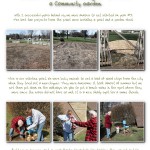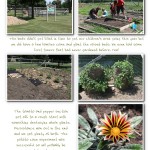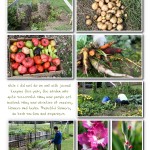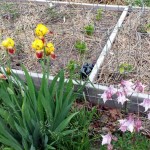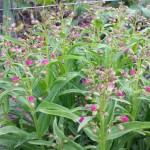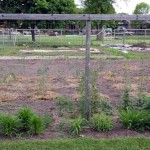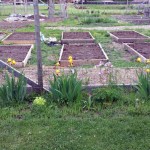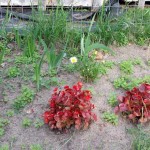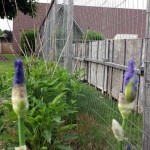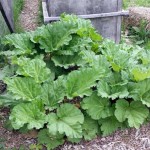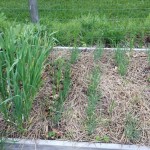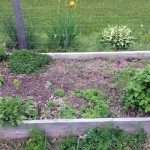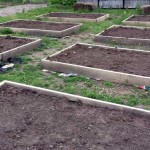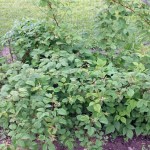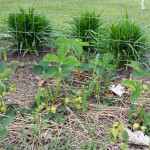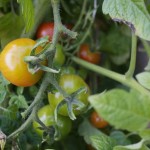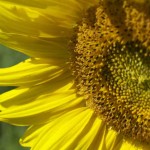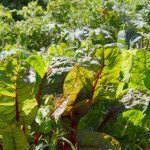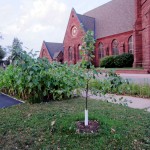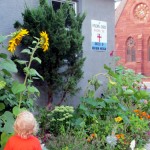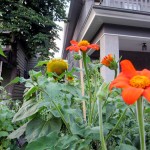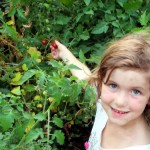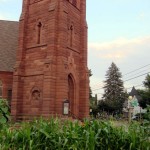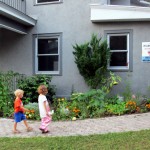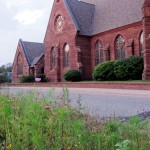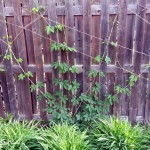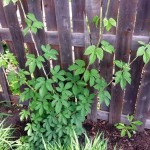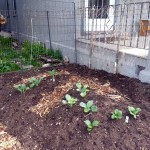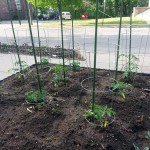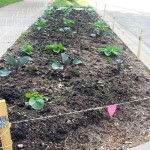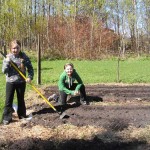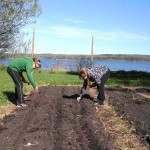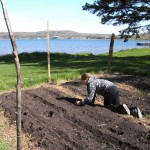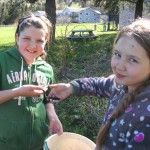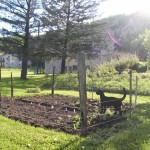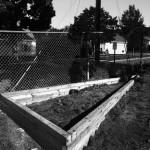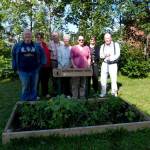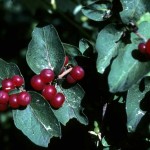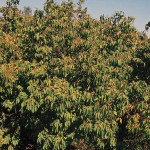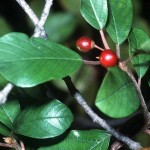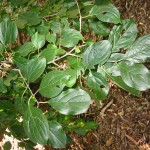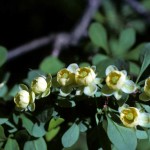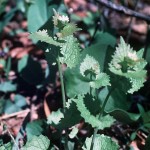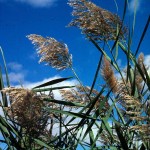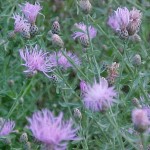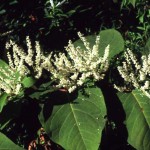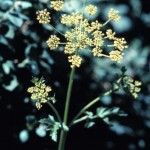Earthkeepers II Interfaith Garden Project

Earthkeepers II will build on a vision to establish and maintain a network of interfaith community gardens. These gardens will be designed to preserve native plants, eliminate invasive species, provide and enhance habitat for our essential native pollinators, and provide vegetables, herbs and fruits for food pantries and the wider community. Earthkeepers II is partnering with the U.S. Forest Service, Keweenaw Bay Indian Community and local seed conservation and invasive species management groups.
Check out our garden events page for upcoming garden events and workshops.
Vision Statement
To provide a place for spiritual and secular communities to come together to provide nourishing food to its members and to facilitate the beautification and restoration of habitat and healing of ecosystems in our towns and villages.
Loading map...

Thank you to the all the congregations who participated in creating Earthkeeper Community Gardens.
| DENOMINATION | CONGREGATION | LOCATION |
| United Methodist | Bark River United Methodist | Bark River, MI |
| ELCA Lutheran | Bethel Lutheran | Cedarville, MI |
| ELCA Lutheran | Calvary Lutheran | Rapid River, MI |
| Episcopal | Christ Church Episcopal | Calumet, MI |
| ELCA Lutheran | Eden Lutheran | Munising, MI |
| Episcopal | Episcopal Dioceses of Northern Michigan | Marquette, MI |
| UMC | First United Methodist | Marquette, MI |
| Keweenaw Bay Indian Community Greenhouse | Baraga, MI | |
| Zendo | Lake Superior Zendo | Marquette, MI |
| ELCA Lutheran | Lutheran Campus Ministry | Marquette, MI |
| ELCA Lutheran | Messiah Lutheran | Marquette, MI |
| Jewish | Temple Beth Sholom | Ishpeming, MI | Unitarian | Unitarian Universalist Congregation | Marquette, MI |
| Lutheran | Victory Lutheran | Gwinn, MI |
| Lutheran | Zion Lutheran | Allenville-Moran, MI |
| Lutheran | Zion Lutheran | Marinette, WI |
Photos
Zion Lutheran Church, Marinette WI
Lake Superior Zendo Garden, Marquette MI
Episcopal Diocese of Northern Michigan, Marquette MI
Eden Lutheran Church, Munising MI
Temple Beth Sholom, Negaunee MI
Christ Episcopal Church, Calumet MI
Resources
Cool Harvest
Cool Harvest is a food, faith and climate program by Interfaith Power & Light, a nonprofit organization inspiring a religious response to global warming. It is for congregations interested in responding to climate change through educating their members about climate-friendly food choices and engaging them in activities, such as organic gardening, that can inspire and have a positive impact.
www.coolharvest.org/about/
Michigan Fresh
What’s the best way to cook those vegetables you bought last week at the farmers market? How do you select annuals that will make your yard pop with color?
msue.anr.msu.edu/program/info/mi_fresh
Its National Wildflower Week!
It’s National Wildflower Week! Get a Little Wild with Flowers on National Forests and Grasslands.
Are They on Your Land?
Nonnative plants–
- Tatarian Honeysuckle
- Amur Honeysuckle
- Glossy Buckthorn
- Common Buckthorn
- Japanese Barberry
- Garlic Mustard
- Phragmites
- Spotted Knapweed
- Japanese Knotweed
- Wild Parsnip
- Lonicera tatarica / Tartarian honeysuckle
- Lonicera maackii / Amur honeysuckle
- Lonicera xbella / Showy fly honeysuckle
- Frangula alnus / Glossy buckthorn
- Rhamnus cathartica / Common buckthorn
- Berberis thunbergii / Japanese barberry
- Alliaria petiolata / Garlic mustard
- Phragmites australis / Common reed
- Centaurea spp. / Knapweed
- Polygonum cuspidatum / Japanese knotweed
- Pastinaca sativa / Wild parsnip
Books about invasive plants
U.P. Food Exchange
The U.P. Food Exchange connects local food activity within each of the Upper Peninsula’s three distinct regions (eastern, central, and western), and coordinates local food efforts between the regions. It offers a place to buy and trade goods, get information on speakers and workshops and find information on local farms and gardens.
Plants of the Winter Solstice
By Larry Stritch
http://www.fs.fed.us/wildflowers/plant-of-the-week/winter_solstice.shtml
Many plants play an important role in many of our holiday traditions celebrating the season surrounding the winter solstice. Winter solstice, occurring on or around December 21st, is the first day of winter, the shortest day and the longest night of the year. To early cultures, the winter solstice was a day of both apprehension and celebration of the cold, dark winter and the promise of longer, warmer days to come.
Midwest Invasive Plant Network
MIPN’s mission is to reduce the impact of invasive plant species in the Midwest and has five committees: Green Industry, Early Detection & Rapid Response, Education, Research, and Fundraising. MIPN includes a diverse group of participants and partners. The Nature Conservancy, U.S. Forest Service and the WI DNR have played major roles in the leadership of this network. Other partners include the U.S. Fish & Wildlife Service, National Park Service, IO DNR, IL DNR, Federal Highway Administration, Chicago Botanic Garden, and numerous state and local groups. MIPN continues expansion of their network by reaching out to new partners.
Celebrating Wildflowers
Celebrating Wildflowers is dedicated to the enjoyment of the thousands of wildflowers growing on our national forests and grasslands, and to educating the public about the many values of native plants. Many images and links are available. Celebrating Wildflowers emphasizes:
- The aesthetic value of plants – a field of wildflowers is a beautiful sight
- The recreational value of plants – picking berries is fun for the whole family
- The biological value of plants – native plants support other life
- The medicinal value of plants – chemicals from plants help combat sickness
- The economic value of plants – plant material such as floral greens are commercially valuable
- The conservation of native plants – protecting and maintaining native plant habitat
WildOnes
WildOnes continues to lead the natural landscaping movement as we explore, teach, and change the practice of gardening in our communities and around the country to using native plants.
Cooperative Weed Management Areas
na.fs.fed.us/fhp/invasive_plants/cwma
Cooperative Weed Management Areas (CWMA) in the Northeast and Midwest are local partnerships that coordinate efforts to address the threat of invasive plants across jurisdictional boundaries.
Step-by-Step Guide on How to Develop a CWMA
mipn.org/CWMACookbook2011reduced.pdf
A Step-by-Step Guide on How to Develop a Cooperative Weed Management Area in the Eastern United States.
EPA Green Landscaping: Landscaping with native plants
www.epa.gov/greenacres/nativeplants/factsht.html
Environmental Protection Agency. Green Landscaping: Landscaping with native plants. Landscaping with native wildflowers and grasses improves the environment and adds a taste of wilderness to urban, suburban, and corporate settings by attracting a variety of birds, butterflies and other animals. Once established, native plants do not need fertilizers, herbicides, pesticides or watering, thus benefiting the environment and reducing maintenance costs. Gardeners and admirers enjoy the variety of colors, shapes, and seasonal beauty.
PLANTS Database
PLANTS Database provides standardized information about the vascular plants, mosses, liverworts, hornworts, and lichens of the U.S. and its territories. It includes names, plant symbols, checklists, distributional data, species abstracts, characteristics, images, crop information, automated tools, onward Web links, and references. This information promotes land conservation, as well as academic, educational and general use.
Xerces Society
Xerces Society is a nonprofit organization conserving invertebrates such as butterflies, bees, dragonflies, beetles and their habitat worldwide. Invertebrates build stunning coral reefs; they are essential to the reproduction of most flowering plants, including many fruits, vegetables, and nuts; and they are food for birds, fish, and other animals. Yet invertebrate populations are often imperiled by human activities and rarely accounted for in mainstream conservation. The Society uses advocacy, education, and applied research to defend invertebrates. Over the past three decades, they have protected endangered species and their habitats, produced ground-breaking publications on insect conservation, trained thousands of farmers and land managers to protect and manage habitat, and raised awareness about the invertebrates of forests, prairies, deserts, and oceans.
Discover Life
Discover Life provides free on-line tools to identify species, teach and study nature’s wonders, report findings, build maps, process images, and contribute to and learn from a growing, interactive encyclopedia of life with 1,268,034 species pages and 624,328 maps.
North American Pollinator Protection Campaign
NAPPC’s mission is to encourage the health of resident and migratory pollinating animals in North America. NAPPC partners gather from throughout the North American continent and beyond. It is a growing, collaborative body of more than 120 diverse organizations. Respected scientists, researchers, conservationists, government officials and dedicated volunteers are succeeding with major programs to protect pollinators, to raise pollinator-related issues, and to benefit the health of all species – particularly those most threatened.
Pollinator Partnership
Pollinator Partnership’s (P2) mission is to promote the health of pollinators, critical to food and ecosystems, through conservation, education, and research. Signature initiatives include the NAPPC (North American Pollinator Protection Campaign), National Pollinator Week, and the Ecoregional Planting Guides.
S.H.A.R.E.
S.H.A.R.E. (Simply Have Areas Reserved for the Environment) is advocated by the Pollinator Partnership (P2). Every human interface with a landscape can simply have areas reserved for the environment. We believe that pollinators show the way to sharing. When you plant for pollinators, plants, pollinators, people, and the environment all benefit. From schools to farms, to churches, to corporation everyone is getting involved and registering their S.H.A.R.E. landscape. Get involved today!
Monarch Joint Venture (MJV)
Recognizing that North American monarch (Danaus plexippus) conservation is a responsibility of Mexico, Canada and the U.S., as identified in the North American Monarch Conservation Plan, MJV works throughout the U.S. to conserve and protect monarch populations and their migratory phenomena via science-based habitat conservation and restoration measures in collaboration with multiple stakeholders. This goal is achieved through a combination of habitat conservation, enhancement and restoration, education, and research and monitoring. The vision is abundant monarch populations that exist for future generations to enjoy. More broadly, we believe in promoting monarchs as a flagship species whose conservation will sustain habitats for pollinators and other plants and animals.
Raised Bed Gardening
www.organicgardening.com/learn-and-grow/how-to-build-a-raised-bed
An article that shows how to make a raised bed.
Native Plant Seed Sources
www.wildflowersmich.org/index.php?menu=9
A list of sources for native plant seeds in Michigan.
Keweenaw Bay Indian Community Natural Resources Dept.
KBIC Greenhouse contact: Evelyn Ravindran Ravindraeravindran@kbic-nsn.gov
Why every church should plant a garden – and how
arocha-usa.org/wp-content/uploads/2012/05/GardenManual.pdf
Why every church should plant a garden – and how. As a Christian conservation organization working in 19 countries on five continents, A Rocha helps restore and protect forests and fields, streams and lakes and the people who live near them and so often depend upon them for their very lives. We do this in response to the biblical mandate to care for that which God created. Indeed, A Rocha, means “the rock” in Portugal where we began in 1983.
School & Community Garden Grants
NELA Transition & Throop Church Learning Garden
nela-transition.wikispaces.com/Throop+Learning+Garden
A Church Yard Butterfly Garden Invites Wings into Worship
www.flourishonline.org/2010/06/starting-a-church-yard-butterfly-garden-with-native-plants/
The Teaching Garden Program – A Ministry Begins!
northgreenwichchurch.org/TeachingGarden.htm
Rain Gardens
A rain garden is a planted depression or a hole that allows rainwater runoff from impervious urban areas, like roofs, driveways, walkways, parking lots, and compacted lawn areas, the opportunity to be absorbed. This reduces rain runoff by allowing storm water to soak into the ground (as opposed to flowing into storm drains and surface waters which causes erosion, water pollution, flooding, and diminished groundwater). They can be designed for specific soils and climates. The purpose of a rain garden is to improve water quality in nearby bodies of water. Rain gardens can cut down on the amount of pollution reaching streams by up to 30%.
Native plants are recommended for rain gardens because they generally do not require fertilizer, are more tolerant of one’s local climate, soil, and water conditions, and attract local wildlife such as native birds. The plants — a selection of wetland edge vegetation, such as wildflowers, sedges, rushes, ferns, shrubs and small trees — take up excess water flowing into the rain garden. Water filters through soil layers before entering the groundwater system. Root systems enhance infiltration, maintain or even improve soil permeability, provide moisture redistribution, and sustain diverse microbial populations involved in biofiltration. Also, through the process of transpiration, rain garden plants return water vapor to the atmosphere. A more wide-ranging definition covers all the possible elements that can be used to capture, channel, divert, and make the most of the natural rain and snow that falls on a property. The whole garden can become a rain garden, and each component of the whole can become a small-scale rain garden in itself.

